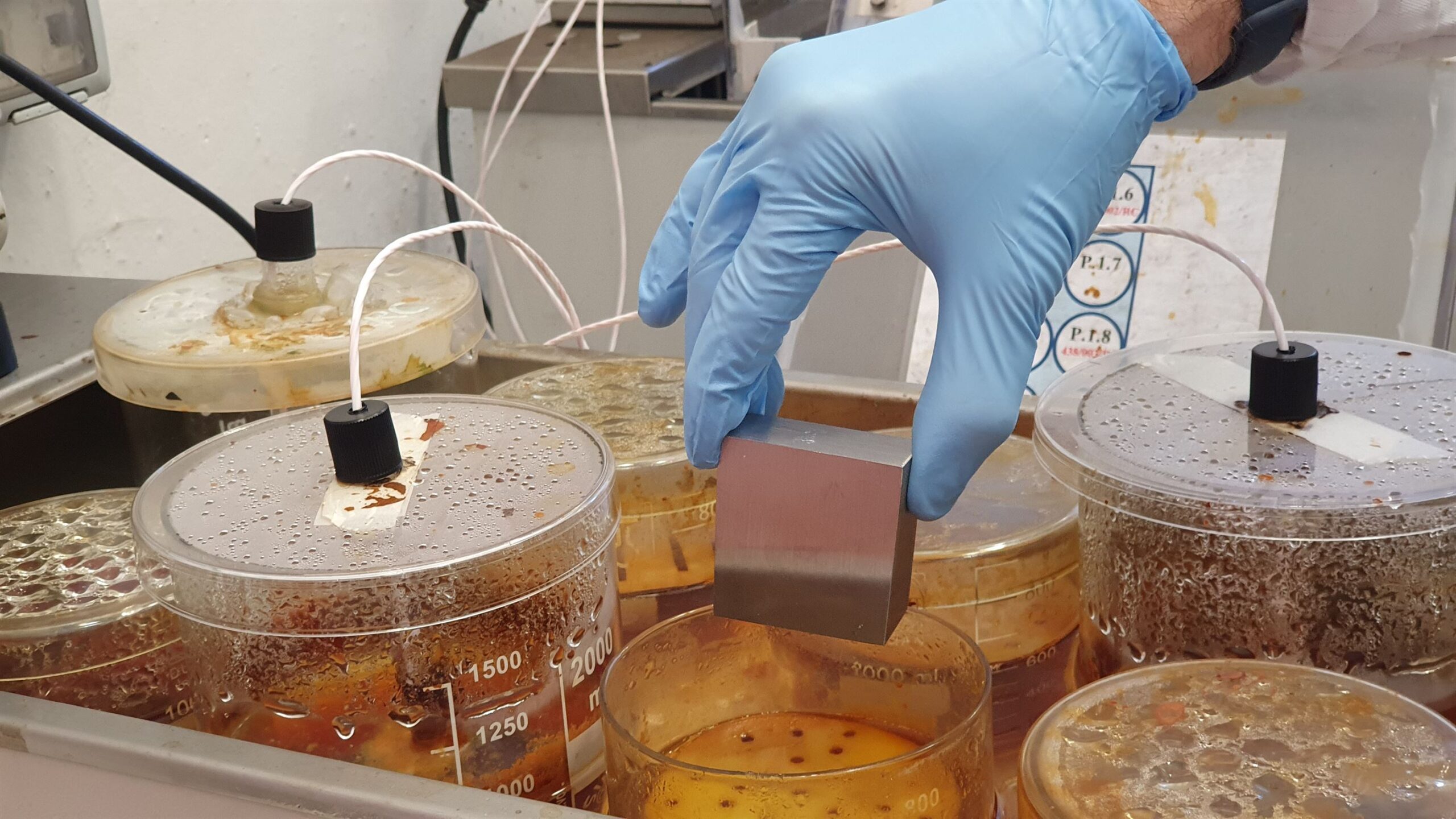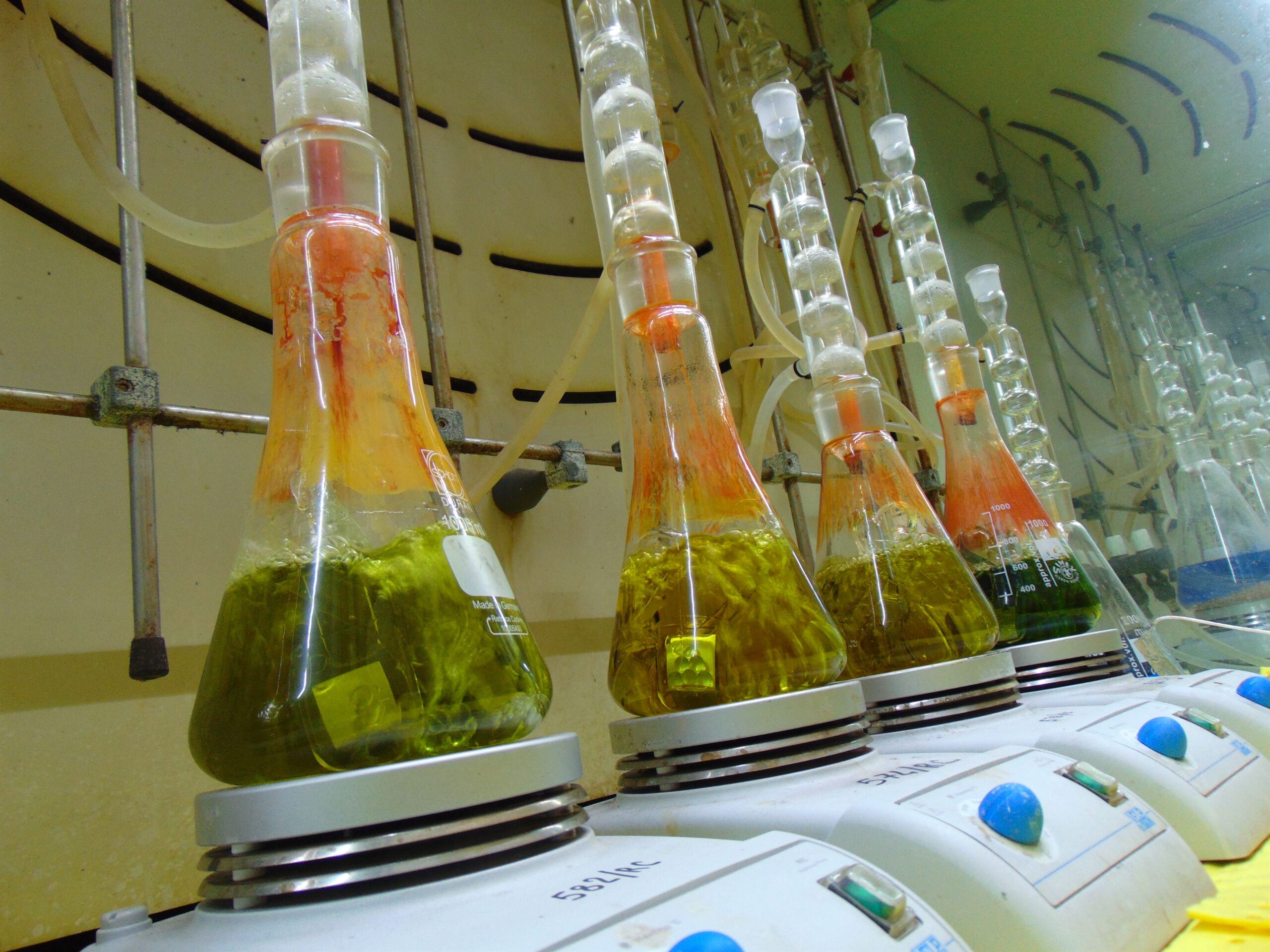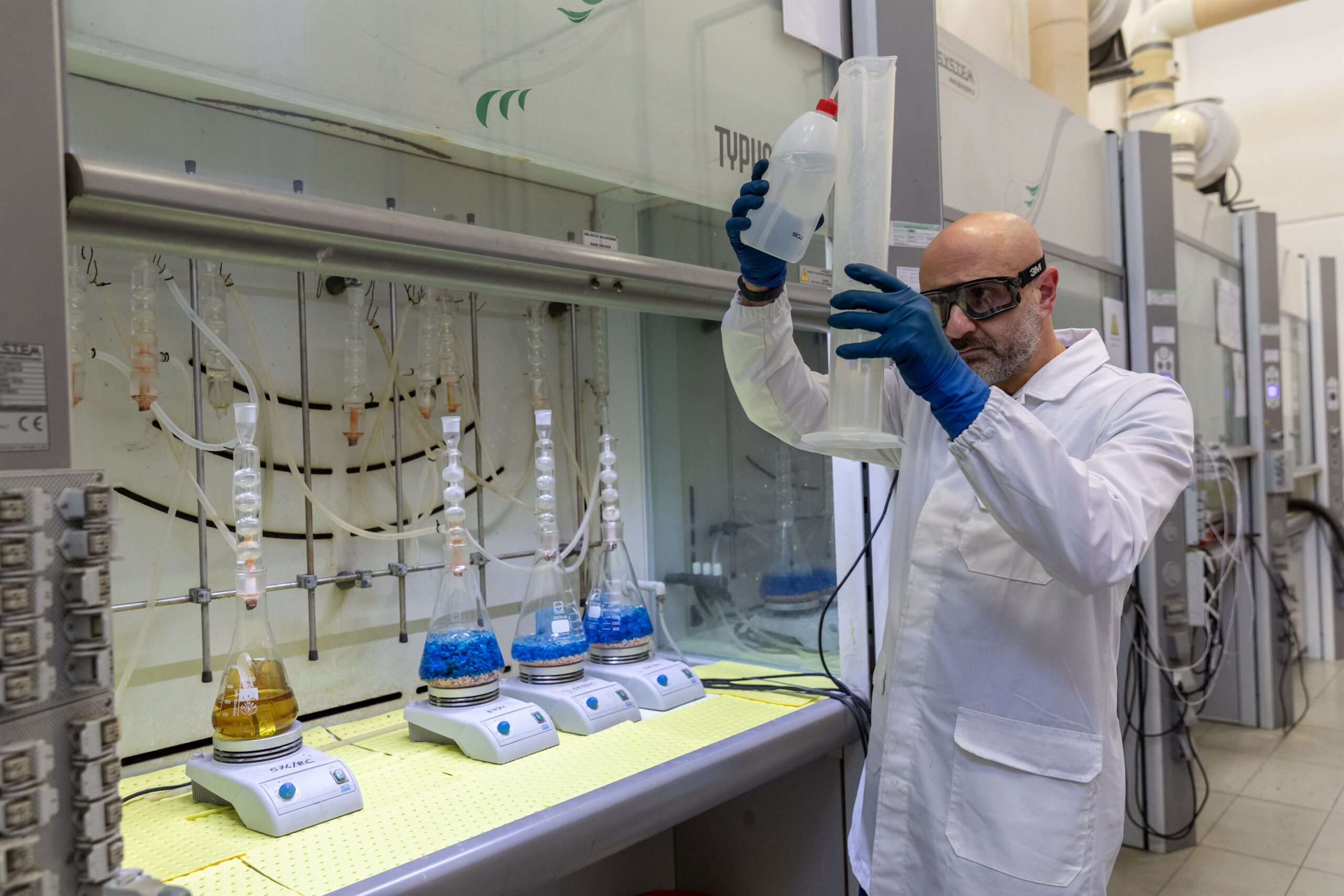INTERGRANULAR CORROSION TEST
Intergranular corrosion occurs at grain boundaries of metallic materials due to precipitates or harmful phases that can develop during the various production steps and especially during heat treatments. Phenomena of this type are particularly relevant in austenitic steels, in Nickel alloys containing significant quantities of Chromium or, more generally, in all those alloys where heat treatments lead to the precipitation of carbides on the grain boundary.
Stainless steels can be subject to intergranular corrosion attacks when subjected to temperatures between 500 and 1000 ° C. These thermal conditions can in fact cause “sensitization” to intergranular corrosion. Generally, this can occur during hot forming processes (such as forging, stamping, rolling), or as a consequence of an incorrect solubilization treatment, or even during welding operations.
Nickel alloys with the presence of chromium, on the other hand, can be subject to intergranular corrosion caused by aggressive service conditions. Corrosion, triggered by precipitation phenomena on the grain boundary, can be a consequence of the chemical composition of the material or thermomechanical transformation processes that it has undergone.
In order to test the resistance to this corrosive mechanism, the metal specimens can be subjected to different test methods selected according to the type of alloy. The most common tests are: Strauss Test, Huey Test and Streicher Test. These are described in the main international standards such as ASTM A262, ASTM G28 and ISO 3651-1 and 2.
The duration of the test, the solution type, the method and any heat treatment to be used are selected based on material type and specifications provided by customer.
The evaluation of the presence of intergranular corrosion can be done by:
- observation of the presence of cracks after bending or crushing;
- by measuring the penetration speed on the basis of weight loss;
- by metallography of the cross section of the corroded specimen and / or of the specimen after heat treatment.
For materials whose composition makes it difficult to precipitate harmful phases, thermal sensitization can be carried out aimed at forcing their precipitation.
Materials of type “L”, with low carbon content, or stabilized with elements such as Titanium or Niobium tend not to precipitate the carbides on the grain boundary and therefore are more resistant to intergranular corrosion than their non-stabilized counterparts.
The application of a sensitization heat treatment therefore makes it possible to observe the behaviour in more severe conditions where these phases could develop despite the compositional measures. Solubilized materials can also be tested in order to verify the effectiveness of the solubilization treatment.
For materials whose composition makes it difficult to precipitate harmful phases, thermal sensitization can be carried out aimed at forcing their precipitation.
Materials of type “L”, with low carbon content, or stabilized with elements such as Titanium or Niobium tend not to precipitate the carbides on the grain boundary and therefore are more resistant to intergranular corrosion than their non-stabilized counterparts.
The application of a sensitization heat treatment therefore makes it possible to observe the behaviour in more severe conditions where these phases could develop despite the compositional measures. Solubilized materials can also be tested in order to verify the effectiveness of the solubilization treatment.
TEST METHODS
- SEP 1877
- ISO 3561-2 Method A, Method B, Method C
- ISO 3561-1
- ASTM A312/A312M Weld Decay Test
- ASTM A262 Practice B, Practice C, Practice E, Practice F
- ASTM A 763 Practice Z, Practice X, Practice Y
- ASTM G67
- ASTM G28 Method A, Method B
- GOST 6032
- EN ISO 9400 Method C, Method D
MORE INFORMATION
Ask a question or request a quote fulfilling the mask below
or call us at (+39) 0523 881 900
Required fields marked with *
YOU NEED ANOTHER TEST?
SIDERTEST
is ACCREDITED FOR A WIDE RANGE OF TESTS




